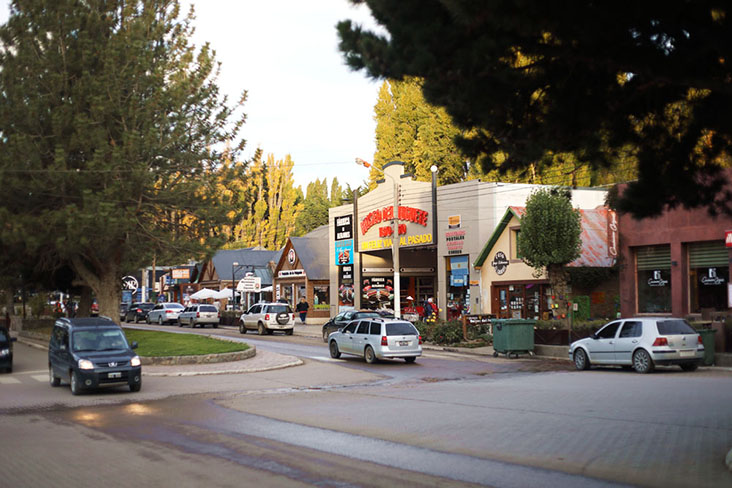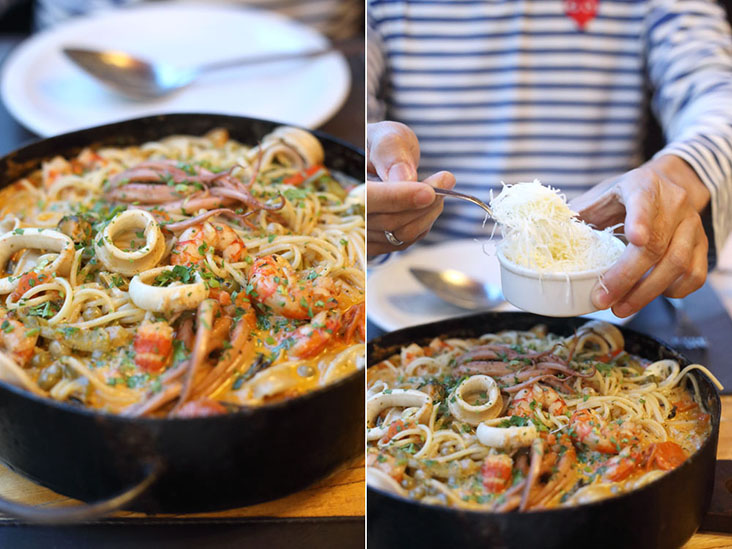EL CALAFATE (Argentina), Dec 7 — Burgers and fries. Sushi. Thai food. Everything you’d expect in any city around the world, such is the globalisation of consumer palates.
Which is fine if you’re hankering for something familiar. When you are in the middle of nowhere — which El Calafate, a town near the edge of the Southern Patagonian Ice Field, feels like at times — however, you can’t help but wish for something more local.
We could hardly blame the neighbourhood’s restaurateurs. El Calafate is a transit town for tourists, in town for a day or two, en route to glacier walks and mountain hiking. It’s safer to provide what your customers will recognise and are more likely to order.

Still, strolling down the town’s version of a High Street, we can’t help but feel despondent at our prospects. After the snow-capped peaks and ice-blue lakes, having a limp slice of reheated pizza or an oversized avocado maki roll would be quite the let-down.
After all, we are in gaucho country; the breathtaking wilderness around us reminds us of ranch hands and cowboys cooking by the campfire. So surely we can do better than cookie cutter international cuisines?
How about something Argentinian, something a gaucho would eat?
The answer we got when we asked around, was a disco. Not the Saturday Night Fever variety, complete with a dance floor and glittering mirror ball, but the Argentinian version of a “cowboy wok”!
Legend has it, some gauchos wanted to cook a meal but lacked a pot. Ingenious fellows that they were, they used a discarded disco — a metal disc used in a horse-drawn harrow to break up clods of soil for farming — as a makeshift pan.

The ploughman’s meal, as it were. Which is why an al disco meal is also called a plough.
Today, a typical plough is a substantial Argentine one-pot stew cooked in an uncovered deep pan (the disco in question) over an open fire. The classic al disco dish is the pollo al disco made simply with chunks of chicken and seasonal vegetables.
Located on the far end of Perito Moreno, a distance away from El Calafate’s main thoroughfare, Isabel Cocina Al Disco is a local restaurant that, as its name suggests, specialises in al disco meals. Diners are a mix of residents and visitors who, like us, have asked around what’s the best place in town for dinner.
Almost immediately after being seated, we are served some crusty country bread. Baked in-house, the bread is so chunky we can carve wedges from it! Spread with butter, it’s meant to soak up the plough’s gravy.
Given the original plough was the pollo al disco, we decide the way to go has to be the restaurant’s signature pollo al vino blanco con crema de leche, cebolla de verdeo y papas fritas. Quite the mouthful.

What arrives, 20-30 minutes later, is a deep pan of chicken cooked in white wine and cream. Perfumed with spring onions, the profusion of fried potatoes ensures this is one meal that will stick to your gut.
We dig in, one spoonful at a time.
One minute the dish reminds me of ayam pongteh, the Peranakan stew of my Malaccan childhood: so nourishing, so full of love. The next I’m taken back to Munich, tasting Geflügelragout for the first time, the shredded rotisserie chicken melting into the gravy, with plenty of creamy Kartoffelbrei (mashed potatoes) on the side.
A meal of al disco isn’t just hearty; it’s heart-warming, which might be why it must always be shared with another.
We enjoyed our plough so much that we couldn’t resist returning the following night for another meal there. A minor challenge, though: with so many styles of disco to choose from, what should we try next?

Regional produce such as the famous Patagonian lamb is featured in the cordero patagónico con verduras, panceta ahumada y hongos de pino. Wild mushrooms and smoked bacon add plenty of umami to the sometimes gamey meat.
There is plenty of Italian influence in Argentina, thanks to the wave of immigrants to the country in the early 1900s. One popular plough is the bifes a la napolitana or Neapolitan steak, which showcases thin slices of boneless tenderloin brightened with a hit of lemon juice.
In the end, we decide on mariscos con pasta, a sumptuous plough brimming with all manner of seafood. Rings of squid and tentacles too, succulent prawns and juicy mussels, cooked in a gravy of cream and Patagonian beer — such extravagance!
Naturally, we shower our pan of mariscos con pasta with extra grated cheese, better to coat the surprisingly still al dente spaghetti that wind around every morsel of seafood. The chef must have added the pasta towards the end, and drained the noodles quite dry, for the sauce remains undiluted: thick and flavourful.
Argentines tend to eat dinner later in the evening, so the restaurant remains open till midnight. There’s plenty of time to finish your meal; you’d need to go for second and third helpings if you’re to see the bottom of your disco anyway!

There’s no pleasure quite like unearthing the “hidden depths” of a disco pan, and I must admit it took the better part of an hour (and possibly the next) before we managed to do justice to ours. The food kept us warm, and our conversation too, long and leisurely.
Everyone takes their time in Argentina. No one ever rushes.
For desserts, you could have ice cream such as almendrado con Baileys — sweet almond ice cream doused with the Irish cream liqueur. Perhaps a traditional Argentinian candy, the queso y dulce made from cheese and sweet potatoes. Rich budín de pan (bread pudding) or flan casero (home-made cream caramel)?
Chances are you’ll order none of these for you will still be patting your belly, achingly full from a true ploughman’s meal. You have dined like a gaucho-al disco — and you’ll be serenading friends and family alike for years to come about the feast you had in a small Argentinian town, in the middle of nowhere.
Isabel Cocina al Disco
Perito Moreno 95, Z9405 El Calafate, Santa Cruz, Argentina
Open daily 12pm-12am
Tel: +54 2902 48 9000






















